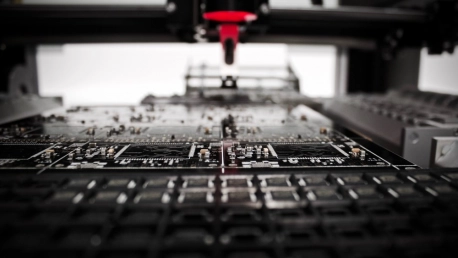It is estimated that more than 300 million computers and laptops are produced every year, and consumers typically replace their existing models with new ones every two years on average. Unfortunately, old products often end up abandoned around the house or thrown in the garbage instead of being collected and offered for recycling. Discover below how computer production affects the environment, as well as some important e-waste statistics
Manufacturing electronics: water, chemicals, fossil fuels, and rare metals
Today, most people turn to smartphones, PCs, or laptops to communicate with others and to perform their daily work tasks. With applications and operating systems requiring more processing power, most of us want to keep up with technology and buy new IT&C products every two years on average. According to experts, we should try to avoid buying new products as frequently as possible and recycle those that are no longer in use. This would contribute significantly to reducing environmental pollution because manufacturing new products requires millions of tons of water, tons of chemicals or fossil fuels, and new resources of rare components that are increasingly hard to find and exploit.
The demand for the production of new equipment is growing, but not all consumers know what is behind mass production. According to the Electronics TakeBack Coalition, 81% of a desktop computer’s energy use is in making the computer, not using it. Manufacturing a simple computer with a monitor takes over 1.5 tons of water, over 20 kilograms of chemicals, and almost a quarter of a ton of fossil fuels—and that’s just for a single PC. When thinking about pollution, we need to consider that over 300 million new computers are produced worldwide every year. In addition, each computer requires rare components that involve mining, which in turn massively pollutes the environment.
We generate more than 57 million tons of e-waste
According to a report by Global Waste Monitor, humanity generated a record amount of waste electrical and electronic equipment (WEEE) in 2021, totaling over 57.4 million tons.
As e-waste is currently the fastest-growing type of waste in the world, the solution could be to change the way we consume. For example, we can use a computer or laptop for 4-6 years until it breaks down and becomes too expensive to repair. Then, once it becomes waste, it needs to be put into the right recycling loop.
Waste should not be thrown in the waste bin but offered to specialized recycling centers when it’s no longer in use. Only at these centers are they properly disassembled and the components are sorted and can be reused to make new products, supporting the circular economy. Otherwise, old computers and laptops are burned, polluting the air and soil with hazardous chemicals. The main benefit of recycling computers is that raw materials can be reused to a large extent to make new products, without the need to exploit nature’s limited resources.
Recycling one million laptops can save enough energy to power 3,500 homes for a year and create 296 extra jobs per year for every 10,000 tons of computer waste processed. With only 17.4% of e-waste recycled in 2021, many precious metals such as gold, silver, copper, and platinum have been discarded or burned rather than collected and reused. According to the International Solid Waste Foundation, this waste is valued at nearly $57 billion. That’s more than the GDP of most countries.
Almost every part of a computer is something that you can recycle
Computers and other electronic equipment are made from many types of plastic, glass, and precious metals.
The motherboard is what you might call the “heart” of the computer. Apart from plastic, it is largely made of precious metals such as copper, silver, and gold.
Although batteries are difficult to recycle due to the toxic substances they contain, this doesn’t mean they can’t be used properly. In addition to being reused in newer models, recycling batteries yields a variety of raw materials that can be easily used for other purposes.
Even the cables that connect the various components in a laptop or computer are made from conductive materials such as copper, which is easily recyclable. Like other metals, copper is a finite resource, which means it is essential to recycle it as much as possible.
Worldwide shipments of desktops, notebooks, and workstations are growing
The long-awaited post-pandemic return to normalcy led to a growth in global PC shipment. Canalys data shows that the PC market ended 2021 with a bang, as fourth-quarter shipments exceeded 90 million for the second year in a row. Moreover, worldwide shipments of desktops, notebooks, and workstations increased by 1% year on year to 92 million units, up from 91 million the previous year. This pulled up total shipments for full-year 2021 to 341 million units, 15% higher than last year, 27% higher than 2019, and the largest shipment total since 2012.
Furthermore, the industry saw strong revenue gains, with the total value of Q4 shipments estimated at US$70 billion, an annual increase of 11% over Q4 2020. For the full year, revenue passed US$250 billion in 2021 against US$220 billion in 2020, up 15%, highlighting the seismic transformation in the industry.
Conclusion
Regardless of their size, businesses should be aware of how their everyday activities affect the environment, and whether they can make a positive change to lower their carbon footprint. Concrete steps can be taken: for starters, you can slow down the aggressive laptop replacement policy or instruct your employees to recycle their electronics.









